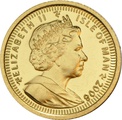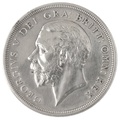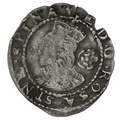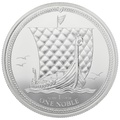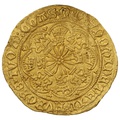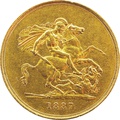How rare is my coin?
Demand from an increasing number of collectors and numismatists is leading to ever-increasing prices for rare coins. This makes them attractive products for both collectors and financial investors.
Many of us have old coins, passed down through generations, that we might want to sell. Many are left asking ‘how rare is my coin?’, and the following guide will help you to work out how rare your coin might be.
There are a number of factors that influence a coin’s rarity, and combined they could give your coin a high scarcity index. Factors that add to a coin’s worth are:
- Original mintage numbers
The amount of a particular coin produced by a mint is one of the key measures that can have a significant impact on a coin’s rarity. 1937
Edward VIII Sovereigns
show the effect of low mintage: by the time Edward VIII abdicated, only a small number of gold Proof Sovereigns featuring the controversial monarch had been minted. Because of this low initial mintage, one of these proof Sovereigns sold at auction for a record £1,000,000 – the highest sum ever paid for a British coin!
- Decline in quantity through ageing and circulation withdrawal
Gold and silver are both non-reactive; gold being the most noble metal on Earth, and silver merely tarnishing. Over time however they can become damaged, and are often recycled. The Royal Mint has occasionally recalled coins to be reissued for this reason.
Coins from centuries ago may be scarce by simple virtue of their age. For example, after 670 years, there are believed to be only three surviving Edward III 1343 Florins. The coin’s great age now gives it a staggering £5.6 million price tag!
- Variation or error coins
Errors in minting almost always add to the rarity of a coin. In 1889, for example, the Victoria Double Florin was issued with an inverted ‘1’ instead of an ‘I’ in Victoria. Even recent common circulation coins when 'mis-struck' can have a high value. Some
2005 £2 coins, commemorating the 400th anniversary of the Gunpowder plot,
were issued with what was at first believed to be an error. They had a typo that reads ‘Pemembep, Pemembep the Fifth of Novembep’. They sold for ten times their face value at one point, before The Royal Mint clarified the issue was a fading design rather than an error.
- Grade and quality
As with any product, the better quality/condition coins are less common and are more highly priced. There are a number of scales used to grade rare coins. For instance, the Sheldon System gives a comprehensive coin grading scale which runs from 0 to 70.
The Sheldon system, one of the ways in which coin rarity can be determined
The term 'mint state' generally indicates a perfect coin. Taking good care of a coin, especially for older issues, can help increase the rarity of the coin.
- Market demand
The final factor contributing to rarity is market demand. Because of their beauty, or a special place in history, some coins are simply more prized and collected than others. The Royal Mint Beatrix Potter 50p coin series has been one such series in recent years.
What makes a coin rare?
Valuable coins are not necessarily scarce coins, but rarity will always add to the value of a coin. Precious metal bullion coins, such as gold Sovereigns, have an initial high price because of their metal content. That price will never be lower than its metal value on the commodity markets. Rare bullion coins will have additional numismatic value over and above their metal content.
Obsolete and rare denominations
Rare coins include many old UK currency denominations that are extremely unfamiliar today. These include:
- Angels
Based on the French
angelot
or
ange
, Edward IV introduced the Angel coin to England in 1465. The Pobjoy Mint has minted modern gold and silver bullion Angel coins in various weights, but the originals are far rarer.
- Gold Crowns and Half Crowns
UK Crown coins have a long and complex history. Originally a circulating currency coin, the Crown had a face value of five Shillings, that is a quarter of a pound.
After Crowns had ceased to be circulating currency, they were issued as purely commemorative or collectible numismatic coins. As such, they had a value higher than their simple legal tender face value.
- Farthings and Three Farthing
A Farthing is a quarter of an old pre-decimalisation penny. Introduced in the reign of Queen Elizabeth I, and popular during the reign of Queen Victoria, it ceased to be legal tender in 1960. Before 1937 the observe showed Britannia, as on the penny coin. After 1937, the obverse carried the image of a wren.
- Quarter Guineas, Third Guineas, Half Guineas, Guineas and Two Guineas
Guineas were minted in Great Britain between 1663 and 1814. Originally worth one pound, and minted from a quarter ounce of gold. From 1717 to 1816 it became worth one pound and one Shilling – £1.05 in decimal currency. The Great Recoinage of 1816 replaced it with the one pound Sovereign coin.
- Florins and Double Florins
A Florin, also known as a Florentine, is named after the state of Florence in Italy. It originated in Florence and was minted there from 1252 to 1533. It was copied by, and assimilated into, many other nations' currencies, including England. The UK Florin, minted from 1849 to 1967, had a face value of two Shillings, or ten decimal pence - one-tenth of a pound.
- Laurels
Laurels were minted from 1619 to 1625, during the reign of James I. When Sovereigns and Unite coins were revalued from 20 Shillings to 22 Shillings, the Laurel became the replacement 20 Shilling coin. It was never a successful denomination however, hence the short minting period. This helps make the Laurel an especially rare coin.
- Nobles, Half Nobles and Quarter Nobles
Entering circulation during the reign of King Edward III, 1312 – 1377, the Noble was the first gold coin made in large quantities. It had a face value of 6 Shilling and 8 old pennies – 80 old pennies or a third of a pound. From 1983 to 1989, the Pobjoy Mint produced a modern platinum bullion version - The Manx Noble, as well as gold and silver equivalents.
- Pennies, Half penny, Three penny, Two penny, Four penny (Groats) and Sixpence
Pennies have long been a UK denomination. Twelve pre-decimalisation 'old pennies' were equal to one Shilling. Twenty Shillings equalled one pound. This made a pound worth 240 old pennies.
Single pennies were first minted in silver, then copper and finally, after 1860, in bronze. The letter ‘d’, from the latin
denarius
, is the symbol for the old penny.
- Ryals
The Gold Ryal are the rarest coins of the late-medieval period, and are also known by a number of other names; Rose Noble, Rose Ryal and Spur Ryal. First issued in 1464, the Ryal would be minted sporadically in the following years, until the third coinage of James I (1619 – 25) which saw the final issuance of the Ryal.
- Shillings
Shilling is from Old English
scilling
. Before decimalisation in 1971 there were 20 Shillings to one pound Sterling. It was first minted in the 16th century from silver. After 1947, it was minted from cupro-nickel.
- Half Sovereign, Sovereigns, Double Sovereigns and Quintuple Sovereigns
The Sovereign is a gold coin with a face value of one pound. It was originally minted as common currency in 1817. Today it is issued as a leading bullion investment coin, made from 22-carat gold.
- Trade Dollars
Trade Dollars are also known as tokens, and were minted by various countries during the 19th century for the purpose of trading in the Far East colonies of the British Empire.
- Unites and Half Unites
Unite coins take their name from the aim of James I to unite England and Scotland. They were currency in both nations, with a value of 20 Shillings or one pound.
If you think you have a gold or silver coin that is rare, then contact one of our team for a valuation on 0121 634 8060.
- How To Buy Gold
- How to Buy?
- Payment Options
- Delivery Options
- Gold Storage
- Storage at Brink's
- Gold Investment Guide
- Why buy gold?
- Is gold a good investment?
- Why physical gold?
- Best time to buy gold?
- Gold bars vs coins?
- Gold vs Silver
- Gold - Silver Ratio explained
- VAT on bullion
- CGT on bullion
- Legal tender coins
- Top 5 Gold Investments
- Top 5 Silver Investments
- Gold vs ISAs
- Gold vs Buy-to-Let
- Gold vs FTSE 100
- Gold vs Bitcoin
- Where to buy gold?
- Why buy from us?
- Where to sell gold?
- Coin Shops
- Gold Price Forecasts
- Top 10 Gold Producers
- Top 10 Gold Reserves
- Gold Britannia vs Sovereign
- Britannia coin designs
- Sovereign coin designs
- Sovereign Mintages
- Sovereign mint marks
- British coin specs
- What is a proof coin?
- Royal Mint bullion
- The Queen's Beasts
- Royal Mint Lunar Coins
- Bullion Refiners
- British coin mints
- Krugerrands
- Gold Tola - India & Pakistan
- Bullion Index


